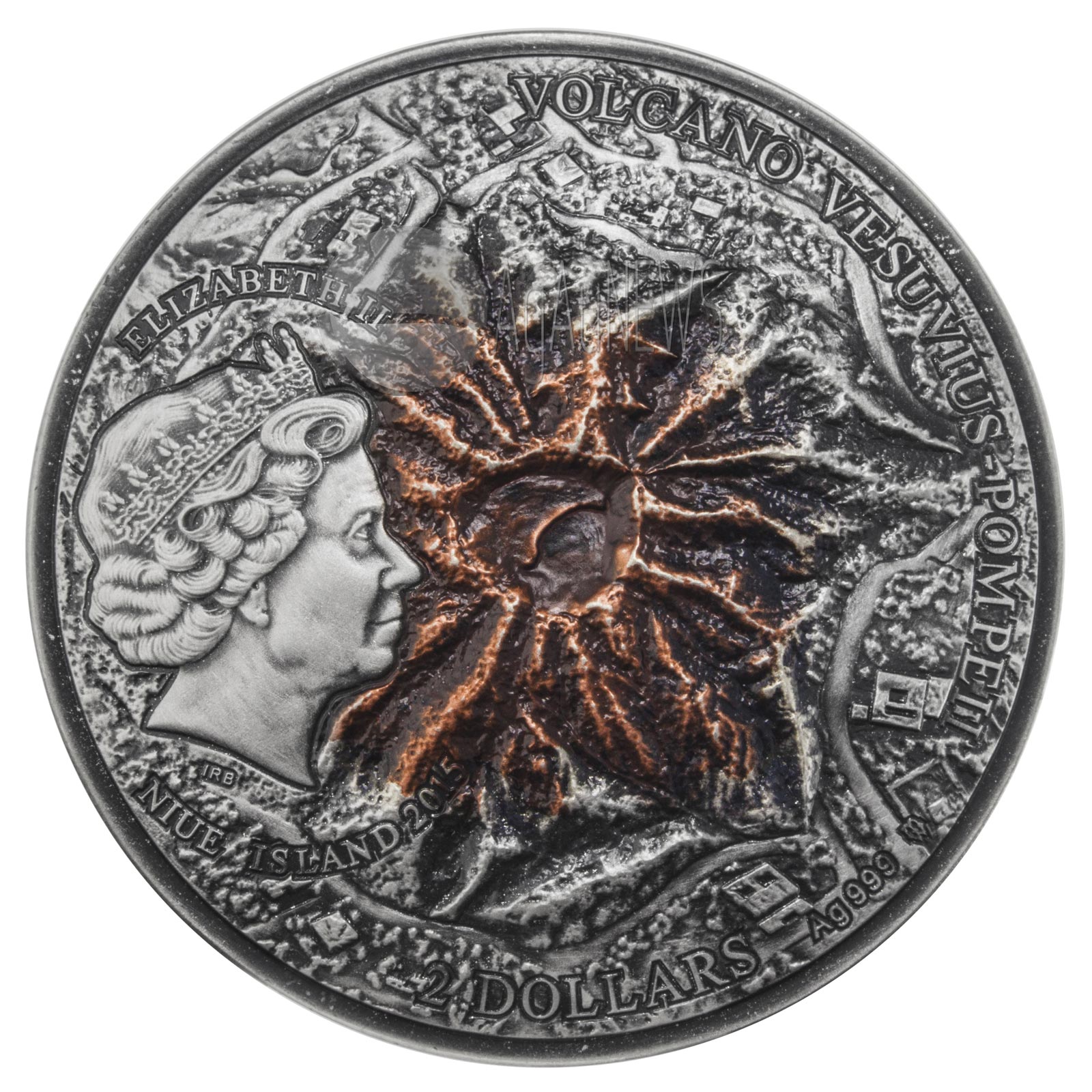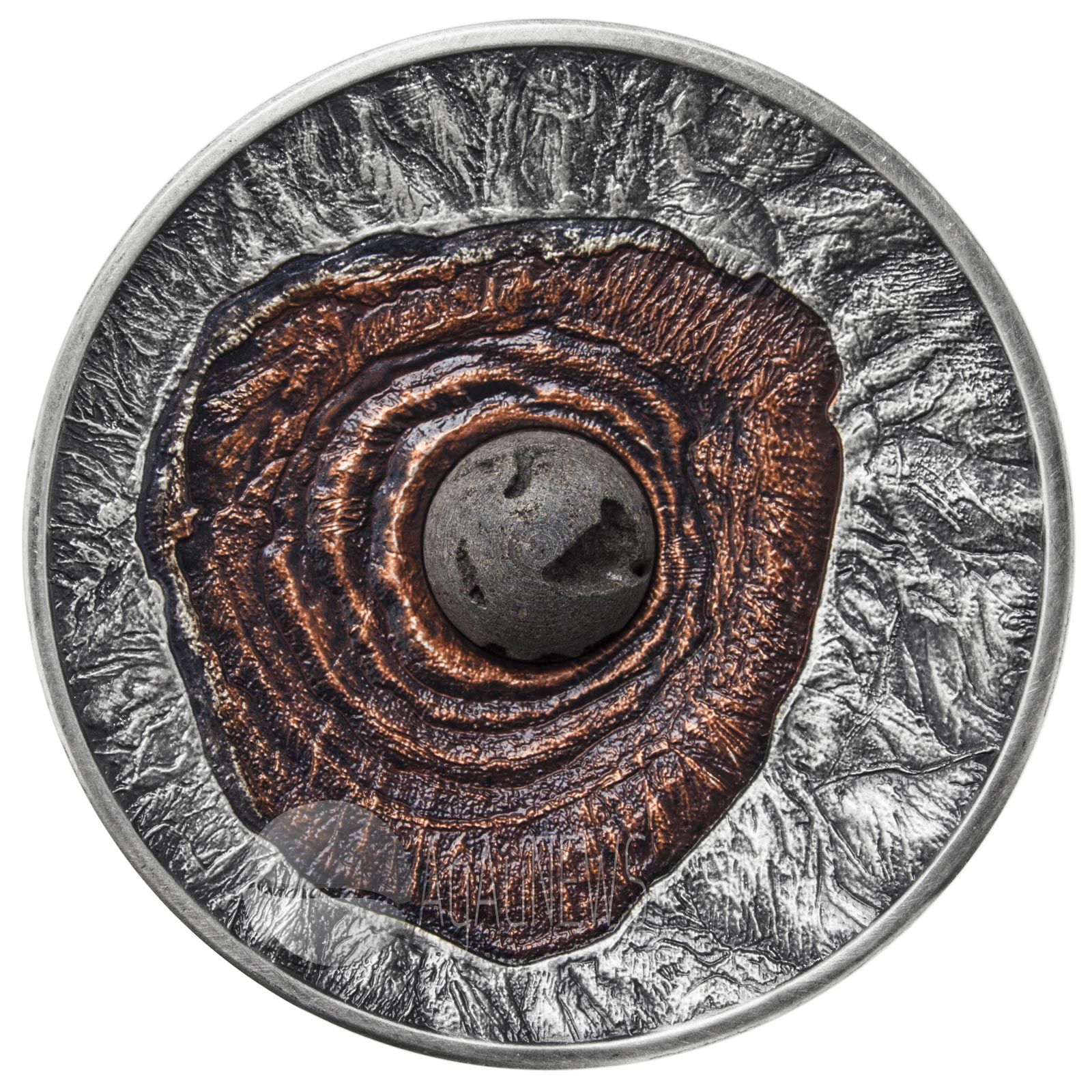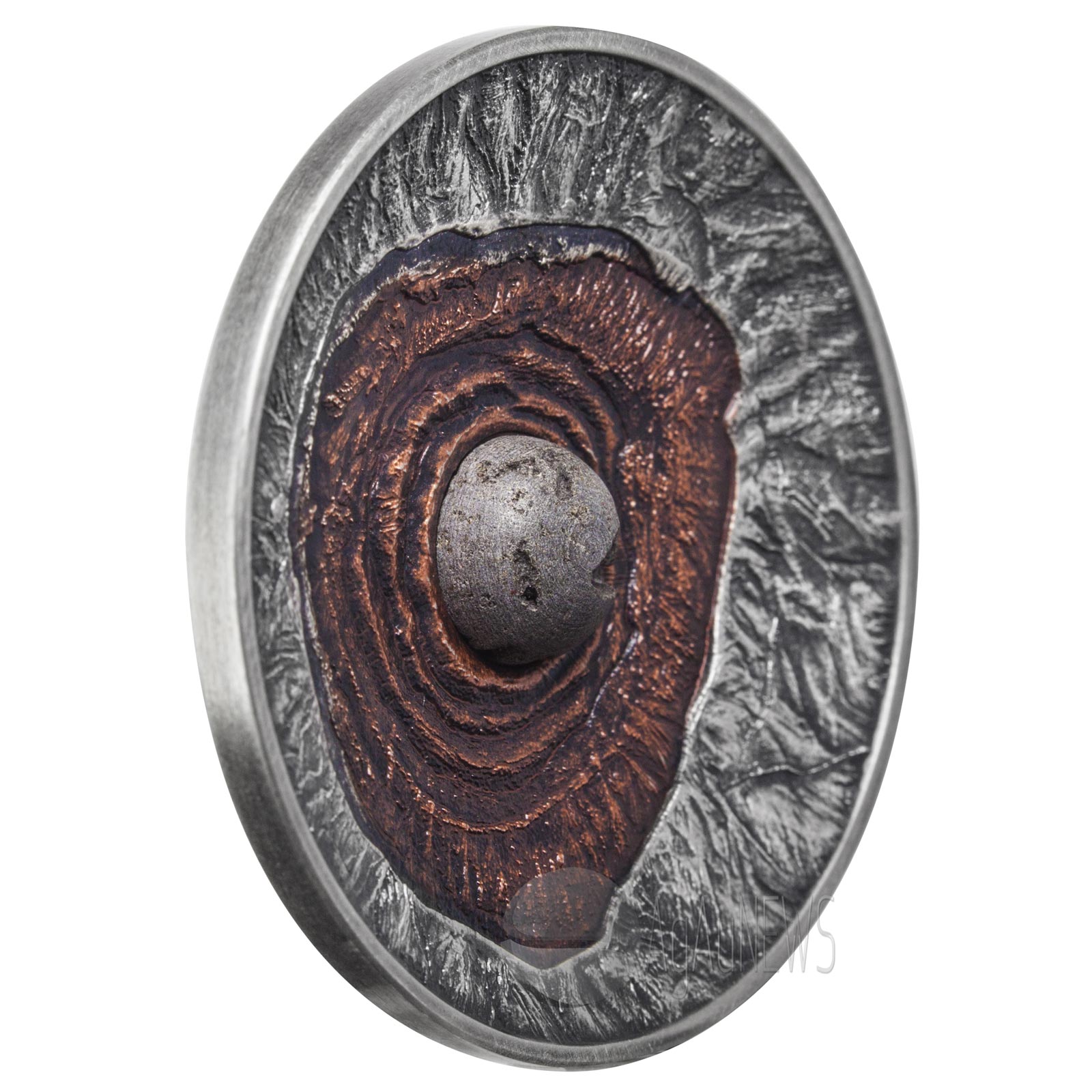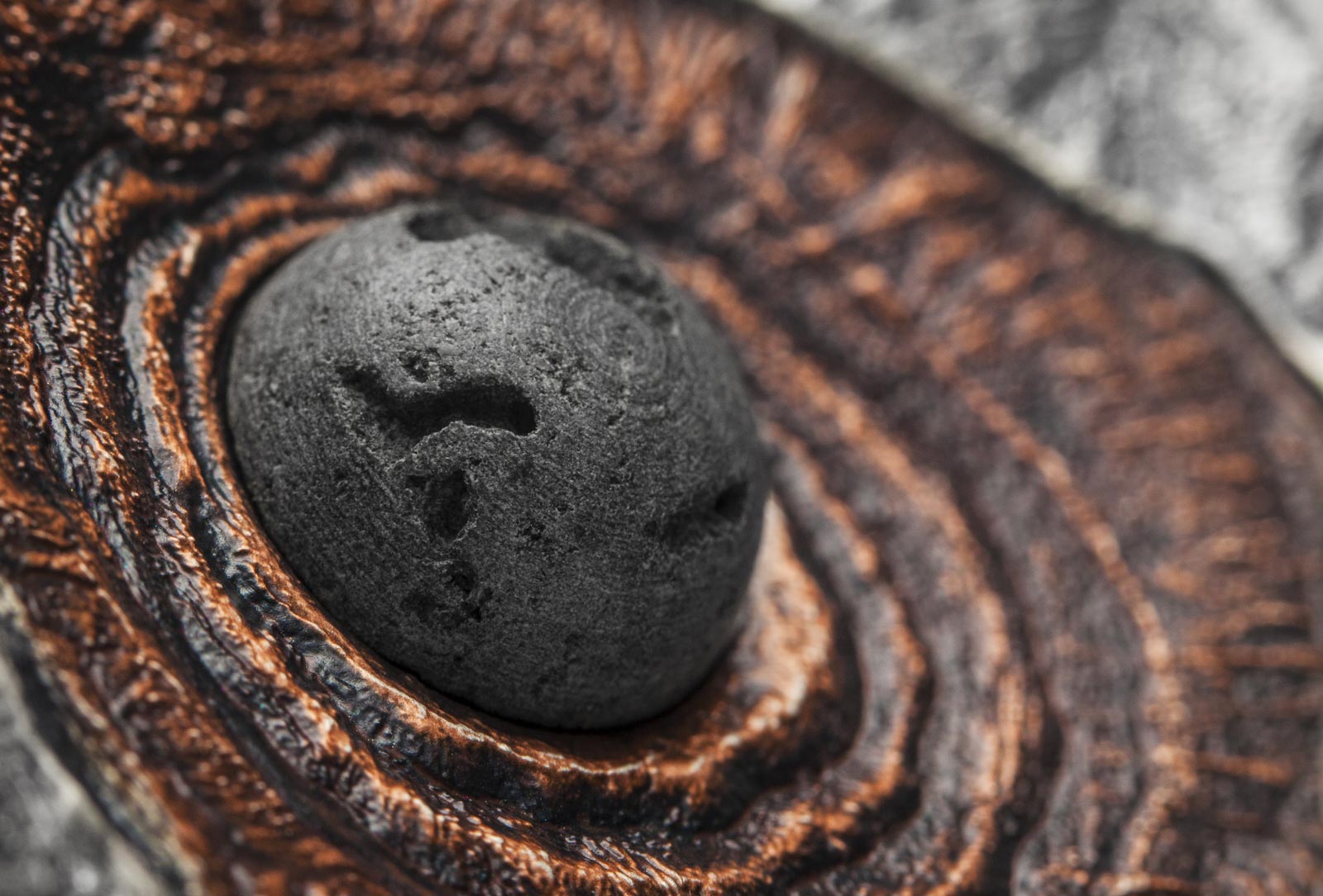Around this time last year the Mint of Poland released the first in a new series of domed coins simply called Volcano. With a series title like that, it’s pretty obvious what the subject matter was, but the mint made the decision to go with a much lesser known volcano than you’d expect for a debut coin. Erta Ale in Ethiopia, a basaltic shield volcano mainly known for having one of only six lava lakes in the world, it being the oldest.
Fast forward a year and the mint has jumped to the most famous volcano in the world, Mount Vesuvius near Naples in Italy. Following the same design pattern, the coin is a true dome, being concave on one side and convex on the other. The concave reverse side carries a half sphere of lava material from the region and sits embedded in the centre, making the most of a strike that approaches 8mm in height from the base. The convex obverse has struck in it a high relief representation of the volcano itself, around the edge of which are some stylised buildings from Pompeii, scene of the hugely famous eruption of 79A.D. that destroyed the town and its neighbours, including the partly uncovered town of Herculaneum, one of those places that should be visited by all.
Issued for Niue, the coin is limited to just 688 pieces and comes packaged in a fine box and coloured outer shipper. It should ship in November from a very select group of dealers, including First Coin Company who helped greatly with the best quality images you see below.
MOUNT VESUVIUS
Probably the most famous volcano in the world, Mount Vesuvius sits in the densely populated Gulf of Naples in Italy, home to around 3,000,000 people. Part of the Campanian Volcanic Arc, this 1,281m tall stratovolcano consists of a large cone partially encircled by the steep rim of a summit caldera caused by the collapse of an earlier and originally much higher structure called Monte Somma.
Vesuvius has erupted many times since and is the only volcano on the European mainland to have erupted within the last hundred years. The caldera started forming during an eruption around 17,000 (or 18,300) years ago and was enlarged by later paroxysmal eruptions ending in the one of AD 79. This structure has given its name to the term “somma volcano”, which describes any volcano with a summit caldera surrounding a newer cone.
In the year of 79 AD, Mount Vesuvius erupted in one of the most catastrophic and famous eruptions of all time. Historians have learned about the eruption from the eyewitness account of Pliny the Younger, a Roman administrator and poet.
Mount Vesuvius spawned a deadly cloud of stones, ash and fumes to a height of 33 km (20.5 mi), spewing molten rock and pulverized pumice at the rate of 1.5 Mt/s, ultimately releasing a hundred thousand times the thermal energy released by the Hiroshima bombing. The towns of Pompeii and Herculaneum were destroyed by pyroclastic flows and the ruins buried under dozens of feet of tephra. An estimated 16,000 people died from the eruption.
Mount Vesuvius has erupted many times. The famous eruption in 79 AD was preceded by numerous others in prehistory, including at least three significantly larger ones, the best known being the Avellino eruption around 1800 BC which engulfed several Bronze Age settlements. Since 79 AD, the volcano has also erupted repeatedly, in 172, 203, 222, possibly 303, 379, 472, 512, 536, 685, 787, around 860, around 900, 968, 991, 999, 1006, 1037, 1049, around 1073, 1139, 1150, and there may have been eruptions in 1270, 1347, and 1500.[ The volcano erupted again in 1631, six times in the 18th century, eight times in the 19th century (notably in 1872), and in 1906, 1929, and 1944. There has been no eruption since 1944, and none of the post-79 eruptions were as large or destructive as the Pompeian one.
The eruptions vary greatly in severity but are characterized by explosive outbursts of the kind dubbed Plinian after Pliny the Younger, a Roman writer who published a detailed description of the 79 AD eruption, including his uncle’s death. On occasion, eruptions from Vesuvius have been so large that the whole of southern Europe has been blanketed by ash; in 472 and 1631, Vesuvian ash fell on Constantinople (Istanbul), over 1,200 kilometres (750 mi) away. A few times since 1944, landslides in the crater have raised clouds of ash dust, raising false alarms of an eruption.
ADVERTISEMENTS
SPECIFICATION
| DENOMINATION | COMPOSITION | WEIGHT | DIAMETER | FINISH | MINTAGE | BOX / COA |
|---|---|---|---|---|---|---|
| $2 NZD | 0.999 SILVER | 62.2 g | 50.00 mm | ANTIQUE | 688 | YES / YES |













Leave A Comment